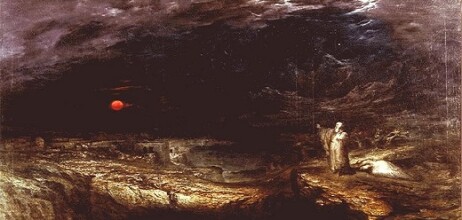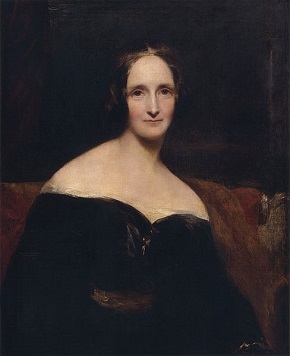Pandemic fiction and Covid-19: Finding ‘solace [in] the narration of misery’
In an article advocating for including humanities and social science research in our response to the Covid-19 pandemic, Daniel Carey convincingly argued that we need to understand the economic, social and political conditions underpinning the crisis. In a brief reference to the cultural sphere, he commented that ‘[t]he arts have taken a backseat, by and large, but how have people accessed culture in the time of crisis and, perhaps more importantly, why do they continue to do so?’ In this piece on fictional representations of pandemics, I’d like to try to suggest a few possible answers to the latter question.
The pandemic period has witnessed a huge upswing in streaming service subscriptions and viewer numbers, and in online book buying: for example, the Guardian reported a 35% rise in the sales of paperback fiction in the week to 25th March 2020, with a notable interest in ‘challenging classics’. So, it might be more properly stated that while the need for cultural scholarship to be included in the pandemic response has not been sufficiently recognised, rather than culture taking a back seat at this time, it is clear that people are turning to fictional cultural works in large numbers. An obvious reason for this turn to fiction is the distraction it provides from harsh current realities. But fictional works can do far more than this, offering us ways to think through complex hypothetical scenarios, as cognitive literary theorists like Keith Oatley and David Herman suggest, and providing a solace of sorts as well, as discussed below. Writing in 1762, long before these literary theories, French critic Denis Diderot captures some of the possibilities offered by imaginative literature in his exuberant account of reading Samuel Richardson’s novels:
In the space of a few hours I had been through a host of situations which the longest life can scarcely provide in its whole course. I had heard the genuine language of the passions… I had become privy to a multitude of incidents and I felt I had gained in experience.
One strand of literature that is of clear relevance to the current coronavirus crisis is that which is already being referred to as ‘pandemic fiction’. And, indeed, sales of classic contagion novels, such as Albert Camus’s The Plague (1947), have dramatically increased, while pandemic movies such as Outbreak (dir. Wolfgang Petersen, 1995) and Contagion (dir. Steven Soderbergh, 2011) have experienced huge spikes in viewership in recent weeks. Pandemic fiction has a long history as imaginative writers across the centuries have offered us fictional versions of plagues and epidemics, often in response to real-world outbreaks of infectious diseases. A recent IHA blog piece by Enrico Dal Lago compares our current situation with that of the 1630 Bubonic Plague of Milan through the lens of Alessandro Manzoni’s famous 1842 novel about the outbreak, The Betrothed. As Dal Lago’s approach demonstrates, fictional works like Manzoni’s can help us to reflect on our current situation and find ways to place it in context.
A key pandemic fiction forerunner, with many parallels to our current situation, is Mary Shelley’s poignant, elegiac account of humanity’s passing, The Last Man (1826), which intrudes insistently on my thoughts these days. In Shelley’s future history, a highly infectious, lethal disease gradually kills off the whole human population, bar a single survivor, Lionel Verney, who lives to tell the tale. While Shelley’s far better-known Frankenstein (1818) warns about the destructive potential of human scientific achievement, The Last Man relentlessly demonstrates the insignificance of human endeavour in the face of a naturally occurring cataclysm. And in doing so, it mocks Enlightenment conceptions of humans as ‘lords of the creation, wielders of the elements, masters of life and death’ (The Last Man (OUP, 1998), 230).
What makes The Last Man feel so relevant is that its first half focuses not on ‘the plague’, but on the struggles of a newly formed twenty-first century English republic to achieve egalitarian reforms, with the progress of the disease impinging only gradually on this inward-looking society. First come rumours of a virulent disease in far distant regions, which seem mildly concerning but of little real relevance to the cast of characters enmired in their day-to-day concerns: ‘small attention was paid to those accounts which declared more people to have died there [in the East] already’ (175). The parallels with the initially uninterested responses of many Western societies, similarly enmired in contentious domestic and interregional politics, to news of the Covid-19 outbreak in China and the Far East are obvious. As with our recent experience, the fictional disease slowly comes closer and closer, reaching Europe and finally England, where the novel is set. Then the plague takes centre stage as Shelley charts its wholesale destruction of English society, a trajectory that seems, in its initial stages at least, to be chillingly close to our own current experience:
We feared the coming summer. Nations, bordering on the already infected countries, began to enter upon serious plans for the better keeping out of the enemy. We, a commercial people, were obliged to bring such schemes under consideration; and the question of contagion became matter of earnest disquisition… The evil was so wide-spreading, so violent and immedicable, that no care, no prevention could be judged superfluous, which even added a chance to our escape. (231)
As several scholars have observed, one inspiration for Shelley’s scenario was a major 1817–24 cholera outbreak, which spread westwards from India to the Caspian Sea, achieving pandemic proportions through following the trade routes of an increasingly globalised world. During this period, it caused growing concern in Britain where reports of its lethality circulated, as Fiona Stafford discusses. Shelley’s fictional plague trajectory followed this real-world path, giving it chilling plausibility for her contemporary readers, as well as for those of us reading now.


Mary_Wollstonecraft_Shelley_Rothwell.tif
Published: 5 May 2020 Categories: Covid-19 and the Humanities

